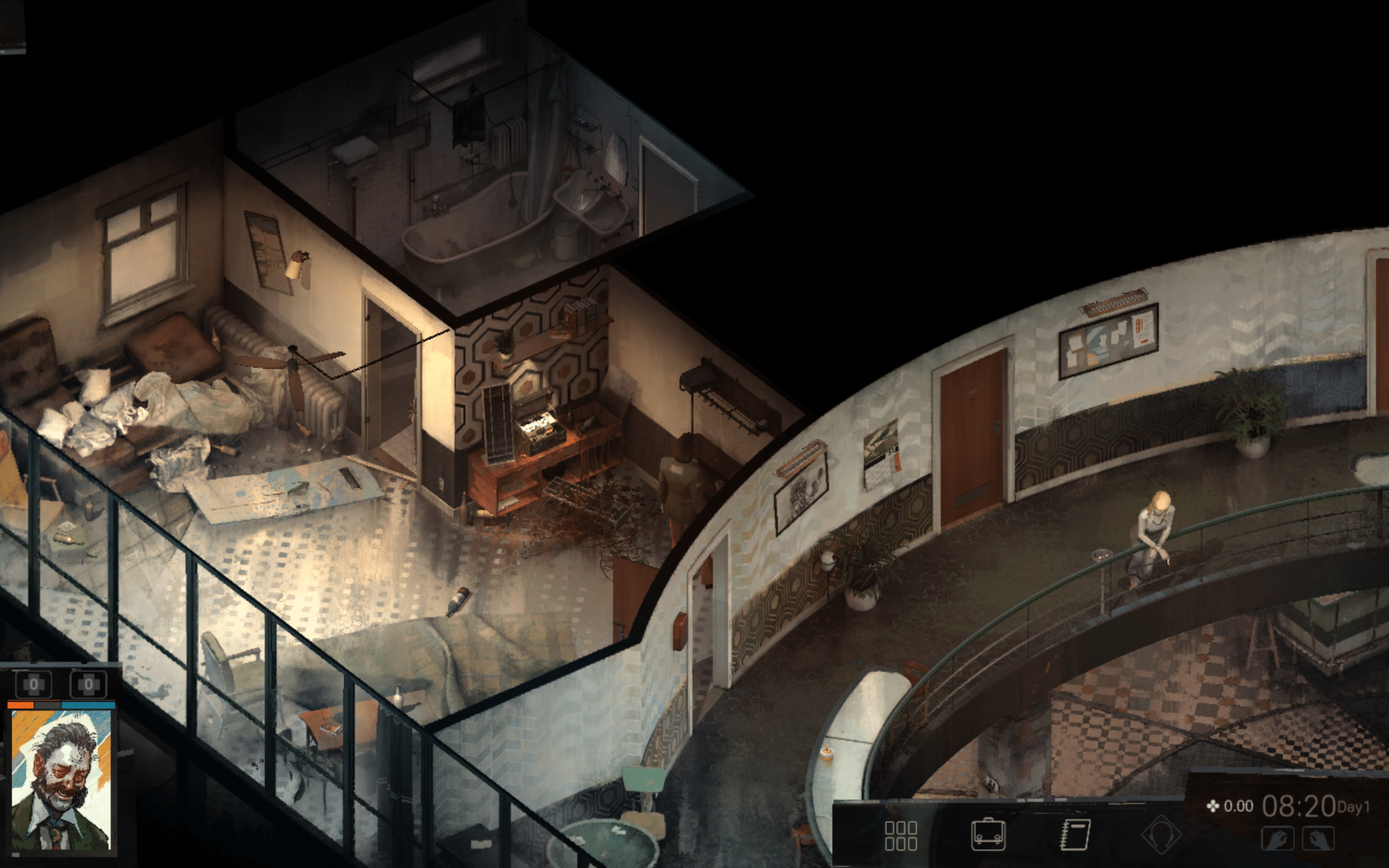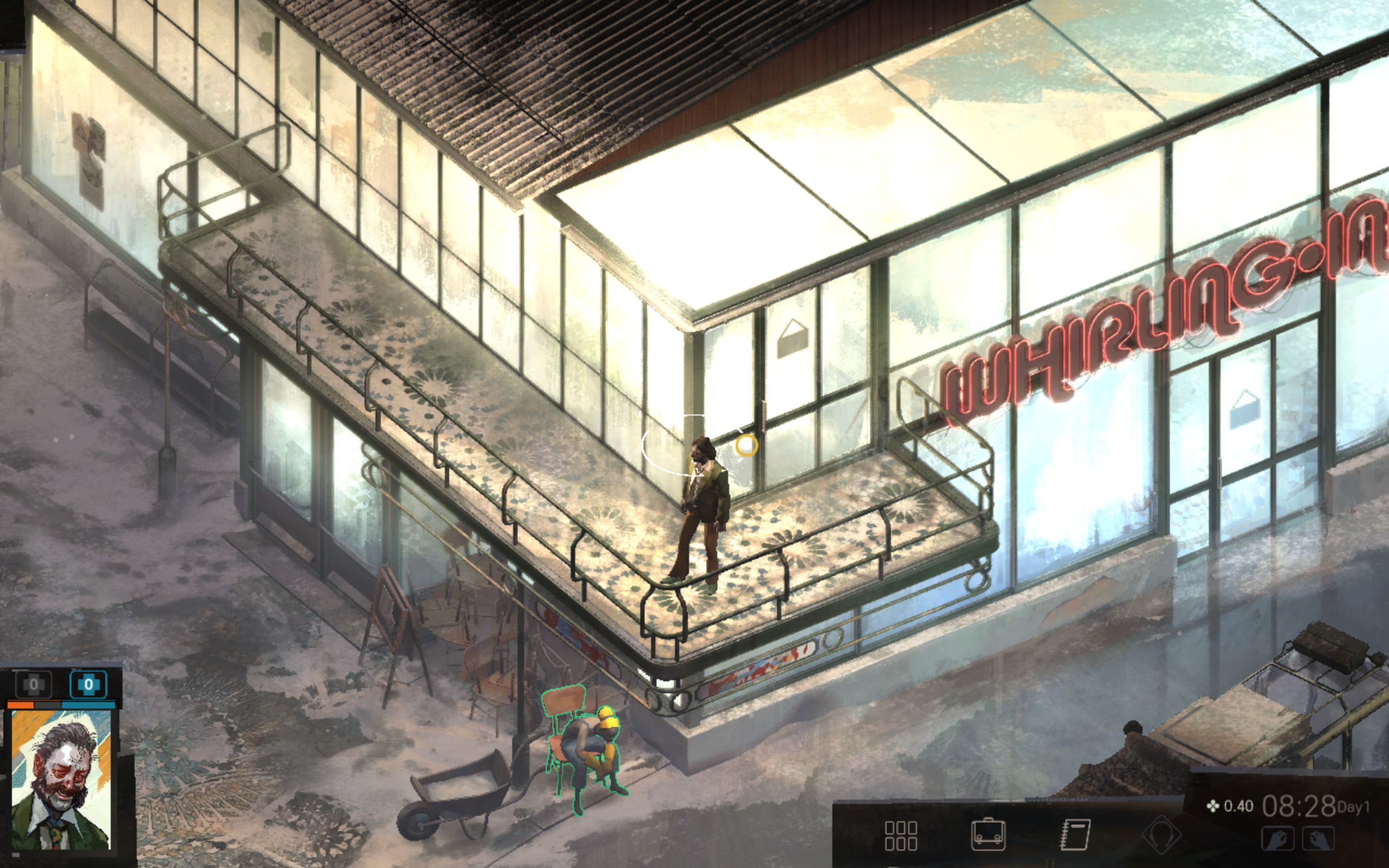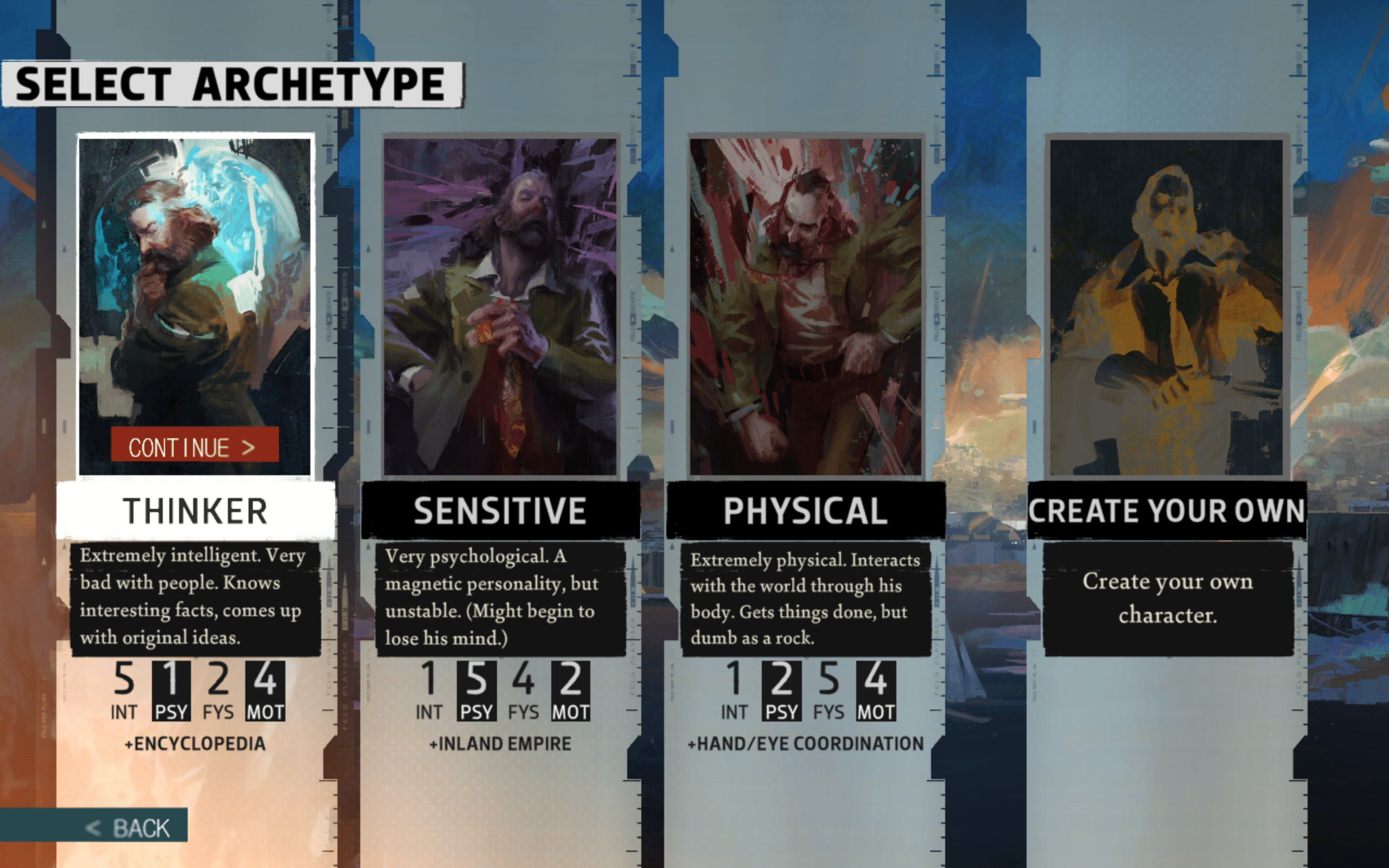The game I played is Disco Elysium. It is developed by ZA/UM and released in 2019. It was designed by Robert Kurvitz and composed by Sea Power. It’s a purely digital game available on Nintendo Switch, PlayStation 4, PlayStation 5, Steam, etc.. I played it via Steam on MacOS.
Honestly, I spent around 2 hours on the game, but still cannot figure out the basic mechanics, or what it’s talking about (probably because I’m not the targeted audience). So here I’m writing it using merely my experience (probably very different from how it actually should be).
The targeted audience should be 18+. The dialogues are nonsensical, and contain a lot of dirty words.

For example, the protagonist, within dialogue, would directly say something like “I want to have sex with you” to a woman that he’s never met before (though later turned about they’ve met).
Besides, the targeted audience should also be those who are really native at English. There is a lot of slangs being used in those conversations.
The game is of type player vs. game. It’s very clear a single-player game.
The objective is not very clear, except just interacting with the game. There is an objective notebook to keep track of several small goals to accomplish within the game, but why those small goals is still unclear.
It seems to be a non-zero-sum game. Simply by conducting dialogues with NPCs and collecting stuffs would let the game progress.
The magic circle would be the world created by this game. It seems still to be the large building that the player is initially located, but it might change afterwards.
The rules of the game are to find something to interact with, either collecting or starting a conversation, to let the game progress, and find out what’s going on.
The main type of fun is Narrative. More and more details of the story are revealed when the player interact more with the characters and the scenes. For example, at the beginning, the player knows the protagonist is a drunkard by interacting with the initial room. The most clear evidence is when looking into the mirror, the horrifying face shows up and we know it’s the face of a drunkard. Later on, when exiting the room and encountering a woman, from the conversation, the player now knows that the protagonist is actually a policeman, but somehow loses his memory, probably because of the hangover.
Another type of fun is Challenge, but I think it falls into the category of being “too hard”. Because of the art-style, it is difficult for the player to figure out which parts of the scene are interact-able, so the designer used highlights over those objects. I think it is a good thing to do. However, many highlighted parts are not responsive. I was stuck on those highlights for a really long time, trying to figure out if there’re any bugs in the program. The result is that it’s too difficult for me to figure out what I’m supposed to do, and lost interest at a short period of time.
It might also has Discovery. I think this goal is perfectly met. At the beginning, only the room and the toilet are viewable, and the rest completely dark. Then I somehow managed to get the key, and unlocked the door. The reachable part were then lighted, and the remaining still dark.

In the above image, if going in front of the windows, I could “hear the sea” as that’s still an undiscoverable space outside. I did feel excited to unlock a new space of the world.
The biggest success is its art. It seems very delicate to me. For example, the face in the mirror, the patterns in the corridor, the rooftop, etc., all had lots of details. In the below image, the reflection on the ground definitely involves a lot of efforts to make.

The fail would be that the game is too difficult for new-comings. I’ve never played this type of game before, and found this game really difficult to understand and control. There are so many little buttons. Even the cloths can be taken on and off (taking off the cloths means being naked). Sometimes there’s a small circle appearing at the head of the protagonist, with some coloured rectangles with some meanings behind that I can’t tell.
Another thing bothered me is that I didn’t know what I’m supposed to do in the first 1.5 hours. Even though I reached the first small goal to find the pair of shoes, I didn’t know where I could find the shoes, and whether I was supposed to achieve that goal within the small room. I was wandering around the same room for 1.5 hours, doing literally nothing but trying to find what is actionable. I don’t recall how I got the key, but during the second time I went to the door, the door was opened, and I could see the entire corridor. But then I was still wandering in the original small room to try to find the shoes.
If I could change the game, I would add some tutorials to the game. Similar to any Artifex Mundi games, initially there is a newcomer tutorial that confident players can choose to skip. It helps the player understand what those circles mean. It should also help the player achieve the very first goal, to let the player fully understand the mechanics.
The game definitely has a loop. The most obvious example is the use of goals within the game. There is a button keeping track of all the current goals that the protagonist is about the achieve. This is a use of a loop to help the player keep track of what’s going on, and learn how to gradually achieve more difficult and complex goals.
I would say the game should have arcs, but not very obvious from the parts I’ve played through. I just finished the first loop (collecting shoes), and had several conversations with all the people I’ve encountered. Then I was stuck and didn’t know how to continue. I would say more experience players are competent enough to continue this game and find out the arcs and later loops.
From what I’ve experienced, I think the structure is the use of micro parallel arcs, the combination of parallel arcs and levels. The game would gradually increase its difficulty level, but still let the player be able to discover what to do next.
A narrative can be woven into the mystery by gradually release information or current status of the game. It can only provide pieces of information for the player to guess. For example, in this game, at the beginning, the player knows that the protagonist is a drunkard. Later on, the player knows that the protagonist is a policeman, and has interrogated several people in the building before. Later on, the player also knows that the protagonist is an asshole, because the options from the conversation are so crazy. Another type of information is the viewable scene. This is well-done in the game that initially, only a small room and a toilet are viewable. Later on, more scenes are viewable.
Also, there could be some narration alongside with exploring the scenes. For example, in this game, there are always some popped up narrations. I don’t know who are the ones joining the conversation, but it definitely increases the mysterious level.
The mechanics include using the mouse to hover around the scenes to find interact-ables. This helps the player to find pieces of information from different objects, or activate some conversation either with the selected NPC or with some unknown character.



